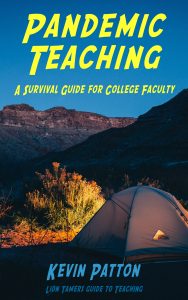The first time I got a tiger to sit up on cue took five or six weeks. Admittedly, I didn't work on it every day. If I had, perhaps it would have only taken me a couple of weeks. Later on, I learned how to get a pretty reliable sit-up on cue in a a few days.
The sit-up is pretty standard fare for training circus cats—especially tigers. There are two reasons for this.
One reason that sit-ups are "standard" tricks is that it is something lions and tigers do anyway. The trick is getting them to do it on cue and with good posture.
Another reason a sit-up is common is that many other performance behaviors are based on the sit-up. A sit-up aligned with other big cats doing a sit-up is an impressive—and therefore commonly performed—part of a circus cat act. A sit-up on a pyramid structure alongside other cats is another standard performance device. Perhaps most impressive in terms of aesthetics is the sit-up atop a large, revolving mirrored ball.
Here's a wonderful example of the mirrored-ball sit-up originally trained and performed by the amazing Charly Baumann and later refined by Gunther Gebel-Williams and Wade Burck. This trick (which you must see live to fully appreciate) cannot be performed unless you have a tiger who can sit-up and hold their position confidently while their seat rotates for a minute or so. This is an advanced skill that is built upon a basic skill.
I've seen some large acts that include several lions or tigers that only have two tricks in their repertoire: sitting on their assigned seat and doing a sit-up one or more times during the performance. But sometimes that sit-up is an advanced sit-up.
The thing about the sit-up behavior is that it's part of the "core curriculum" in training circus cats. But like any commonly expected outcomes, sometimes it's an easy goal to achieve and sometimes it's not. It depends.
One factor involves the native abilities the tiger or lion brings to the lesson. Tigers do sit-ups frequently as part of their natural behavior, so most of them are ready to learn how to do it on cue.
Lions are slightly less prone to do a sit-up naturally and also come with a physical limitation that requires some accommodation—a really thick tail base that can get in the way when trying to sit upright. You sometimes have to take more time with lions—perhaps altering the surface a bit and providing soothing reassurance—to get them comfortable with a sit-up on cue.
A standard sit-up may take more time and effort with an easily-annoyed lion than with an eager tiger. But the outcome is the same.
Another factor is the level of experience and expertise the trainer brings to the lesson. As I stated earlier, after a while, you can get success in training a sit-up more efficiently than when you first started. You've experimented with what works best for different individual cats—and you've seen all kinds of cats by then.
The very best of those highly skilled trainers who can "teach any cat a sit-up" are those who have not let failures stop them. Instead, they persist in trying out new (or old) techniques that may work better with certain animals. They have accumulated more tools in their toolbox.
What can we use from this in our teaching?
- There are some basic learning outcomes that are considered to essential. We'll call them "core outcomes."
- The core outcomes must be mastered before any advanced outcomes are possible.
- Sometimes core outcomes can be easily achieved, sometimes not.
- Some learners are ready—they have existing abilities—to learn a core outcome quickly.
- Some learners come with challenges that must be addressed as they master a core outcome.
- Learners who take more time and effort—and perhaps some accommodations in how lessons are taught—can often still achieve the same outcomes as other learners.
- Teachers can become more effective as they are exposed to more teaching experiences with more students.
- Teachers who persist when confronted with failure often evolve into expert educators.
- Experienced teachers often have more tools in their toolbox from which to choose when dealing with particular students or teaching challenges.
Photo credit: Circus No Spin Zone


